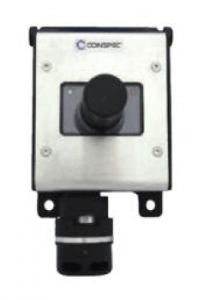 Whoever extracts the most ore in the shortest period of time – safely – wins. That’s mining. It has been like that for a long time. Making use of the right technology has been a contributing factor to winning in mining since it all started.
Whoever extracts the most ore in the shortest period of time – safely – wins. That’s mining. It has been like that for a long time. Making use of the right technology has been a contributing factor to winning in mining since it all started.
While remote control and automation technologies are becoming more and more prevalent throughout the industry, the reality of mining today is that it still requires people. And putting people underground means we need to keep them safe.
As mines get bigger and bigger, just getting the miners from the surface to the working face can take hours – hours that eat into good production time. For example, after a blast, it could take as many as three hours, or more, until miners are allowed to return to their workstations.
But, what if it didn’t have to be that way? At RAMJACK Technology Solutions, we have the right combination of products to support mining companies and contractors in reducing delays due to post-blast re-entry by a staggering amount of time.
Consider this: after a blast, every mine waits for a specified period of time – defined by the ‘worst case scenario’ plus a safety factor – to allow for dangerous gases to dissipate. Then, an experienced engineer or supervisor, wearing full breathing apparatus, enters the area with a hand-held reader to inspect the air quality and rock conditions before giving the green light, allowing everyone to return to work.
Until now, all of this was done manually, but with the right combination of technology, all of this can be done remotely, from surface – and in real-time – dramatically reducing the length of time miners are required to wait.
At Ramjack, we believe reducing post-blast re-entry delays is the latest untapped opportunity for underground mines to dramatically improve their production. Imagine being able to shave 30 minutes a shift off your mine’s post-blast re-entry time. Now, imagine saving 3 hours. It is possible.
Coupling real-time monitoring of dangerous gases at the blast location using wireless gas sensors from Conspec Controls with real-time monitoring of rock conditions in the vicinity of the blast using extensometers and instrumented cable-bolts from Mine Design Technologies makes it possible.
How?
Each instrument – Conspec’s gas detectors and MDT’s extensometers – are designed to communicate through the MineHop persistent sensor network created by Newtrax Technologies. The MineHop network is a wireless network that operates completely on batteries and can be configured to communicate with a mine’s existing leaky feeder system to take wireless readings from the instruments and send them to surface in real-time.
So, now, determining whether it is safe or not to return to the working face can all be done in the comforts of your office. And, better yet, you can receive instant information about when the gas levels have dropped to a safe condition. No more waiting for the worst-case scenario wondering whether it is safe to go back to work. Now, you will know.

